The Portuguese Man of War is one of the ocean’s most fascinating and misunderstood creatures. Often mistaken for a jellyfish, this beautiful but dangerous organism has captivated scientists and beachgoers alike for centuries. With its vibrant blue float and long, venomous tentacles, the Man of War is a marvel of nature’s ingenuity. But there’s so much more to this sea dweller than meets the eye. From its unique biology to its surprising hunting tactics, the Portuguese Man of War is full of secrets waiting to be discovered. Get ready to explore the hidden world of this incredible marine creature!
It’s Not Actually a Jellyfish
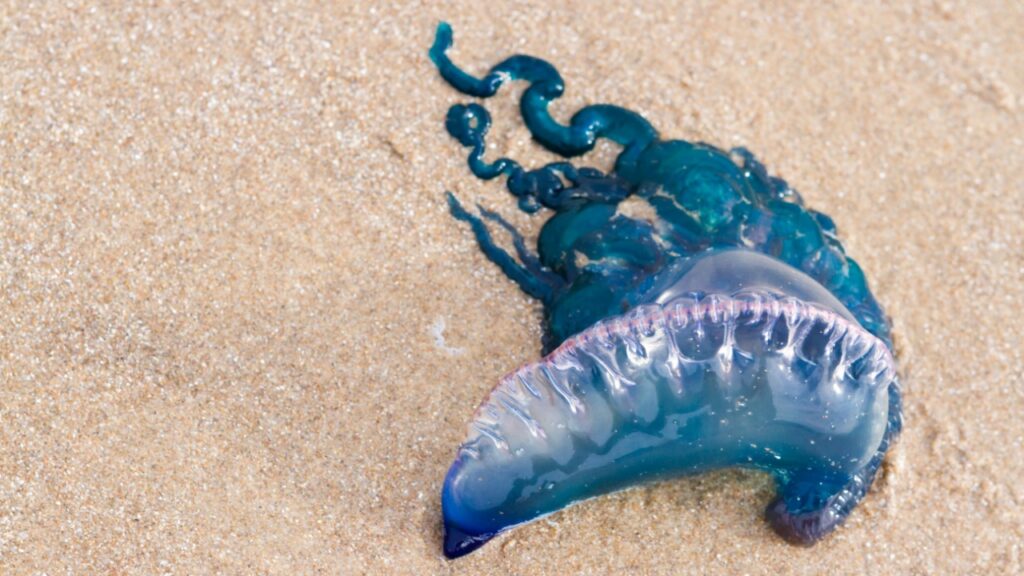
Surprise! The Portuguese Man of War isn’t a jellyfish at all. It’s actually a siphonophore, a colonial organism made up of specialized individual animals called zooids. These zooids work together as a single entity, each performing a specific function. This unique arrangement allows the Man of War to be incredibly efficient in its ocean environment.
It’s Named After a Ship
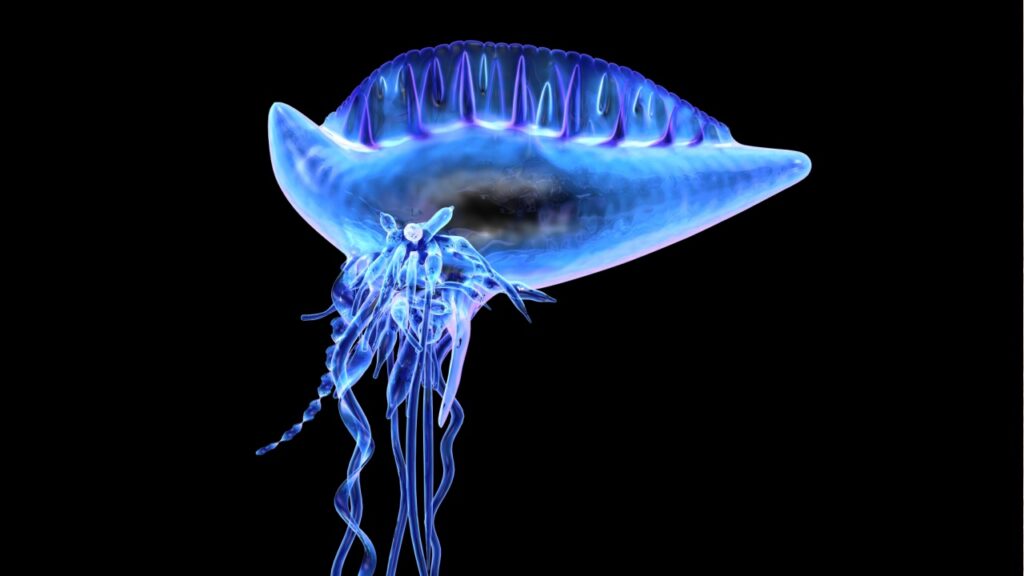
The Portuguese Man of War got its name from its resemblance to a type of 18th-century warship. Its inflated blue float, which can reach up to 6 inches above the water, looks like the sail of these old Portuguese fighting ships. This striking similarity caught the eye of early sailors, leading to its memorable moniker.
Its Tentacles Can Stretch to Amazing Lengths
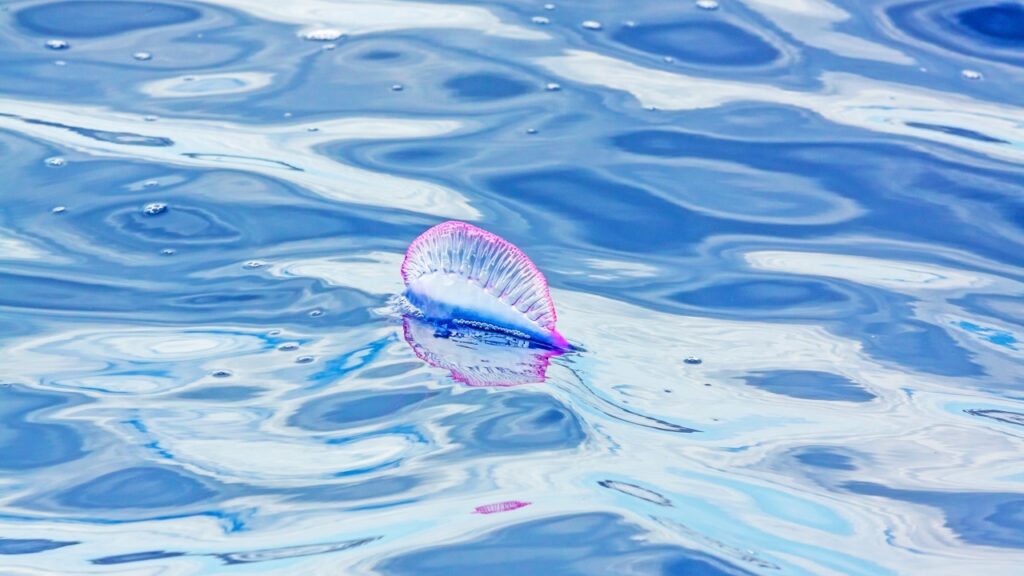
While the Man of War’s float is impressive, its tentacles are truly extraordinary. These venomous fishing lines can extend up to 165 feet below the surface! That’s longer than a blue whale. These incredible tentacles allow the Man of War to catch prey from a vast area, making it a highly effective hunter.
It Has No Means of Propulsion
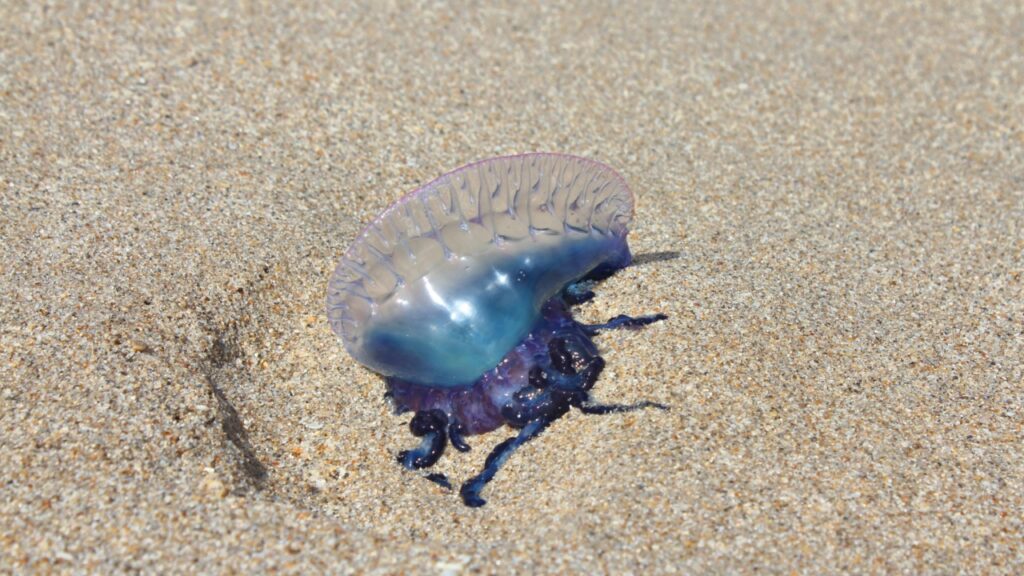
Unlike many sea creatures, the Portuguese Man of War can’t swim. It relies entirely on wind and ocean currents to move around. Its sail-like float catches the wind, allowing it to travel long distances across the open ocean. This passive form of travel means Man of War colonies can sometimes wash up on beaches in large numbers during strong winds.
Its Sting Remains Potent After Death
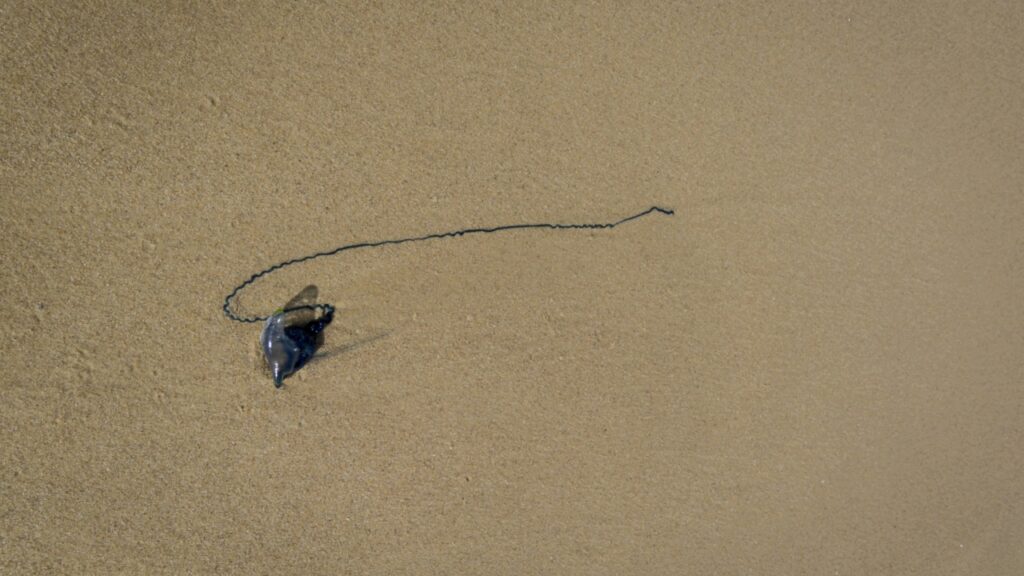
Beware of Man of War remains on the beach! Even when washed up and seemingly dead, their tentacles can still deliver a painful sting. The venom in their nematocysts (stinging cells) remains active for hours or even days after the organism has died. This is why it’s crucial never to touch a Man of War, even if it appears lifeless on the sand.
It’s a Colony of Four Types of Polyps
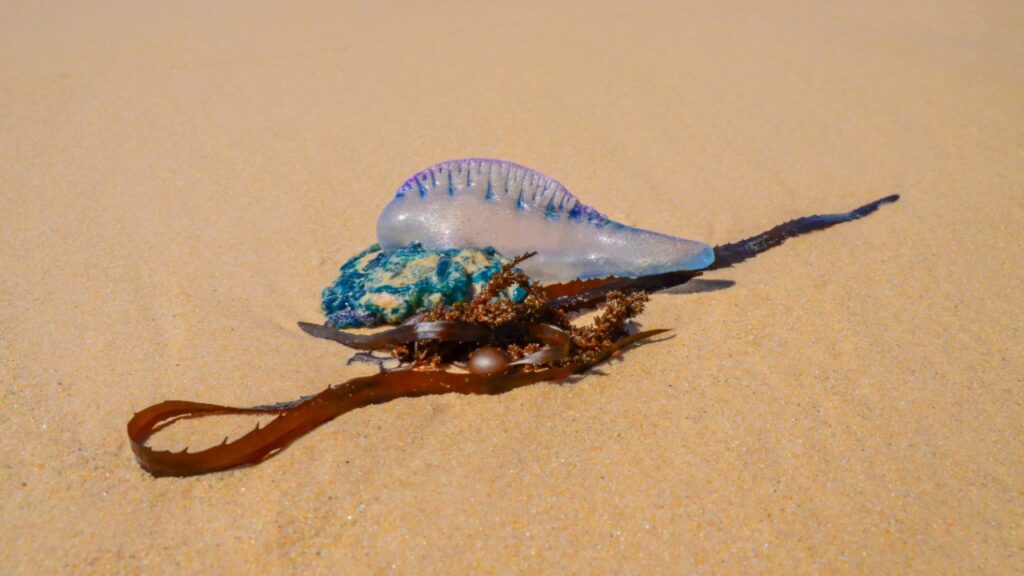
The Portuguese Man of War is made up of four different types of polyps, each with a specific job. The pneumatophore is the gas-filled float, the dactylozooids are the defensive and prey-capturing tentacles, the gastrozooids digest food, and the gonozooids handle reproduction. This division of labor allows the colony to function efficiently as a single organism.
It Can Deflate Its Float to Escape Danger
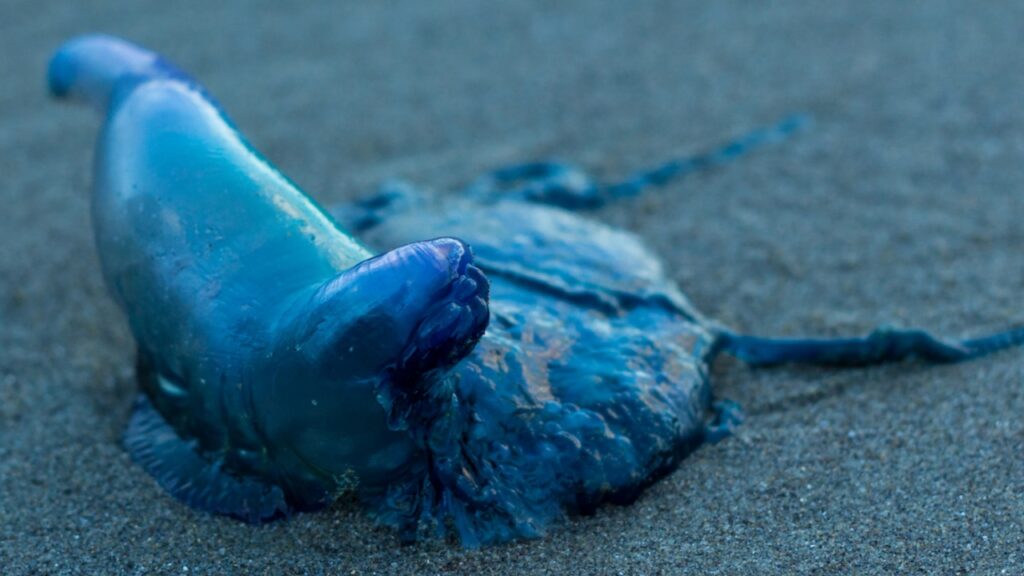
When threatened, the Man of War has a clever escape mechanism. It can deflate its float and sink beneath the waves to avoid predators or rough surface conditions. This ability to submerge itself provides a crucial survival advantage, allowing it to weather storms and dodge dangers on the surface.
Its Venom Is Used for Scientific Research
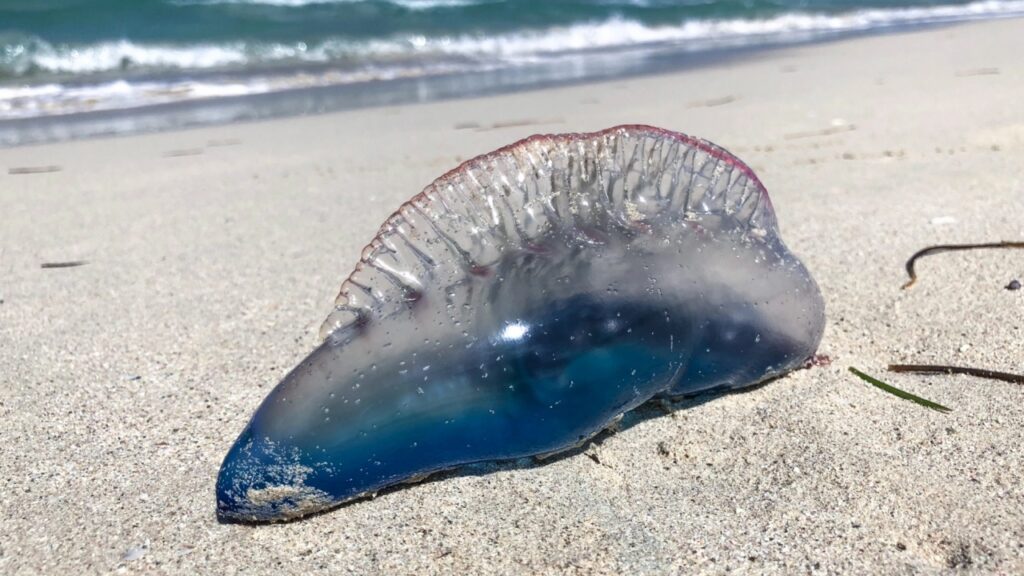
The Man of War’s potent venom isn’t just a hazard; it’s also a subject of scientific interest. Researchers are studying its unique properties for potential medical applications. Some components of the venom show promise in pain management and even cancer treatment, turning this feared toxin into a potential lifesaver.
It Has a Surprising Diet
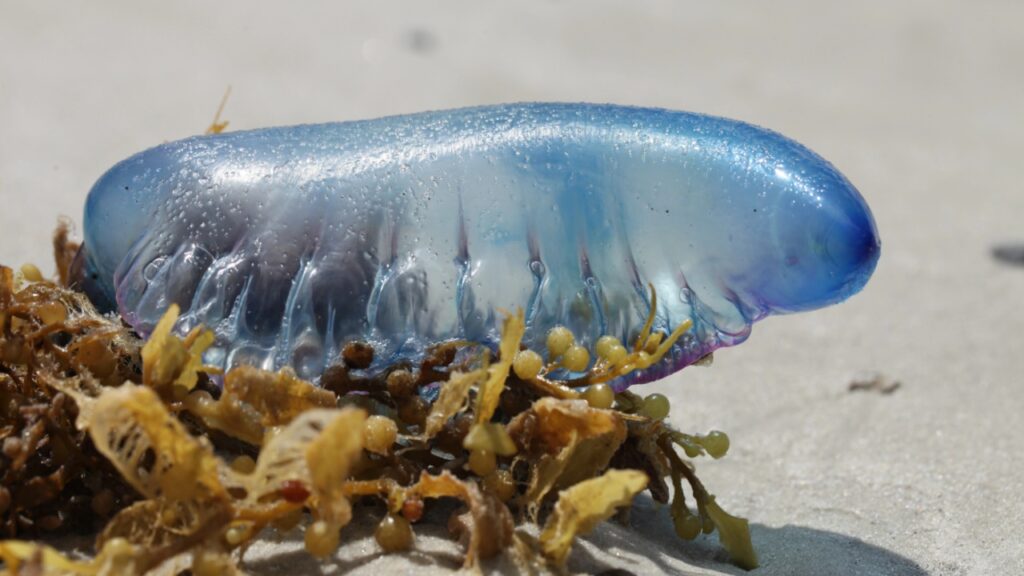
Despite its fearsome reputation, the Portuguese Man of War primarily feeds on small fish and plankton. Its long tentacles trail through the water, paralyzing tiny prey with their venom. Surprisingly, some small fish have developed immunity to the Man of War’s sting and use its tentacles as shelter from other predators.
It’s Not Always Blue
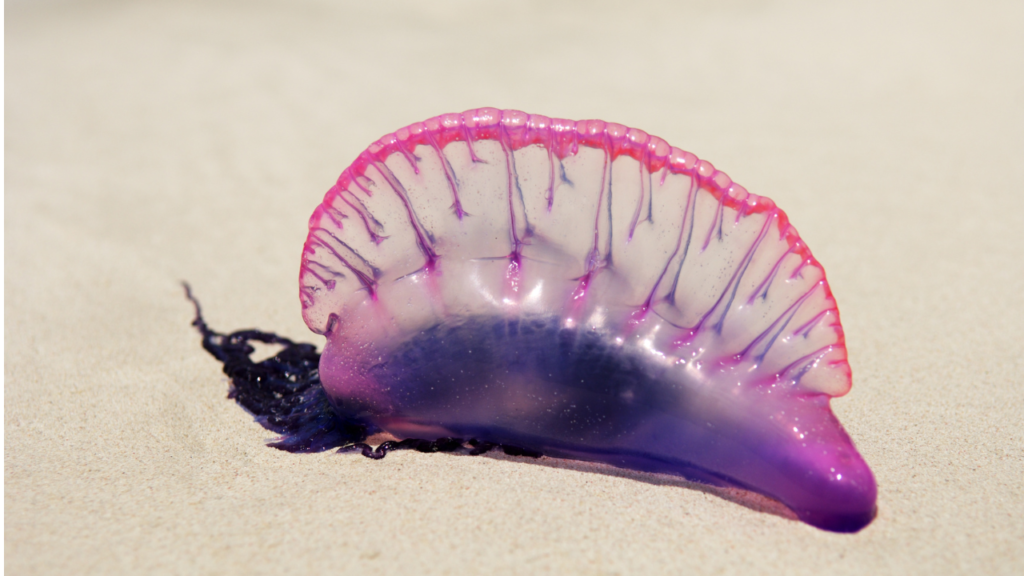
While the iconic blue coloration is most common, Portuguese Men of War can come in other hues. Some have been spotted with pink, purple, or even clear floats. These color variations might help camouflage them in different ocean environments or at various life stages.
It Can Clone Itself
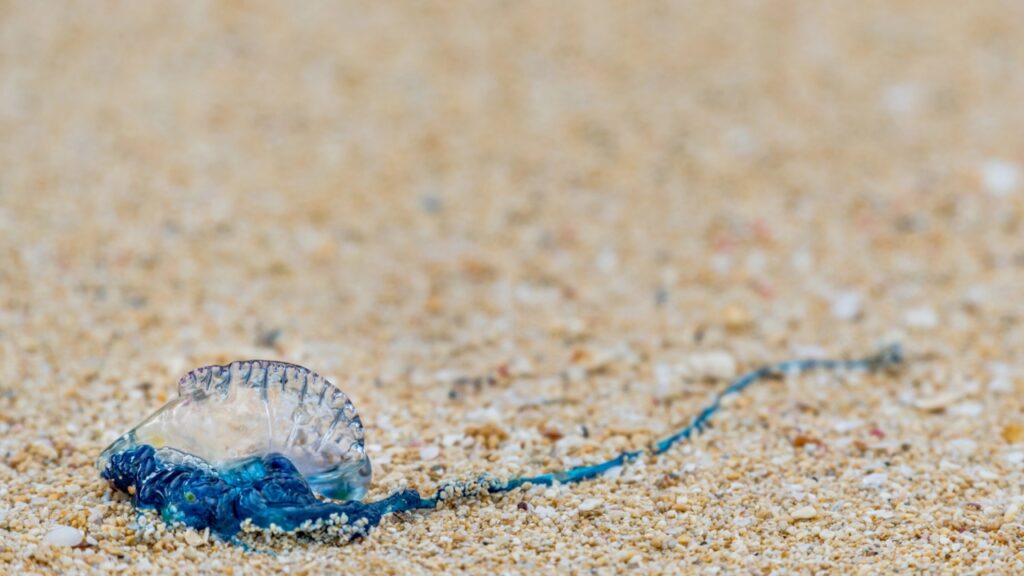
In addition to sexual reproduction, the Portuguese Man of War can reproduce asexually through a process called budding. Small sections of the colony can break off and develop into new, fully-functioning individuals. This ability allows Man of War populations to grow quickly under favorable conditions.
It Has Few Natural Predators
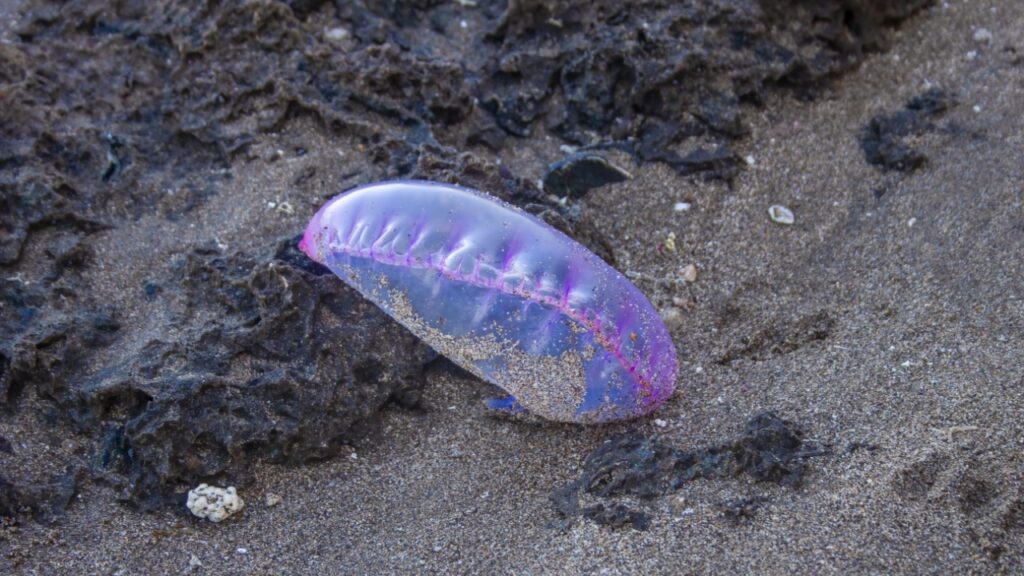
Despite its lack of defenses beyond its sting, the Portuguese Man of War has few natural enemies. Sea turtles, especially leatherbacks, are known to eat them, having developed thick skin and throat linings to protect against the stings. Some species of ocean sunfish and violet sea snails also feed on these creatures, seemingly immune to their venom.
It’s Found in Warm Waters Worldwide
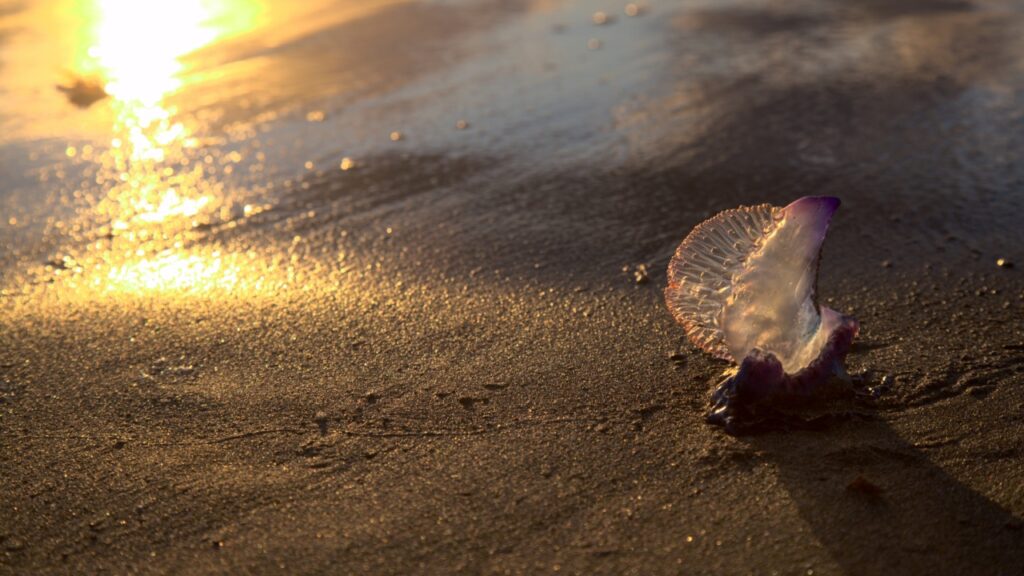
While its name suggests a connection to Portugal, the Man of War is found in warm and tropical oceans around the globe. They’re particularly common in the Atlantic, Indian, and Pacific Oceans. Climate change and warming ocean temperatures may be expanding their range, bringing them into contact with new coastal areas.
Its Sting Rarely Causes Death in Humans
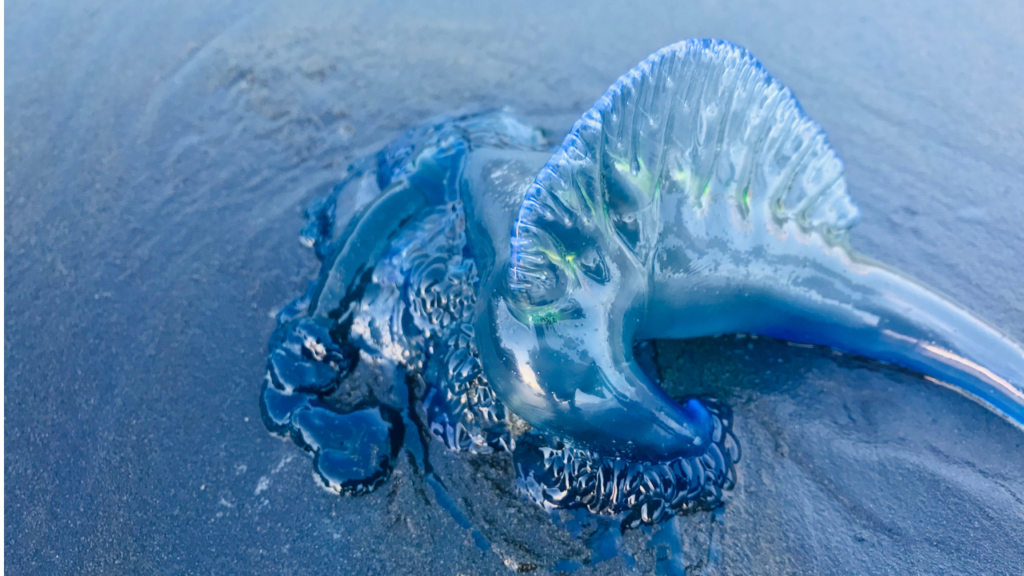
Although painful and potentially dangerous, Man of War stings are rarely fatal to humans. Most stings result in welts and severe pain, but deaths are extremely uncommon. However, the shock from the pain can lead to drowning, so it’s important to exit the water immediately if stung and seek medical attention.
It Can Retract Its Tentacles
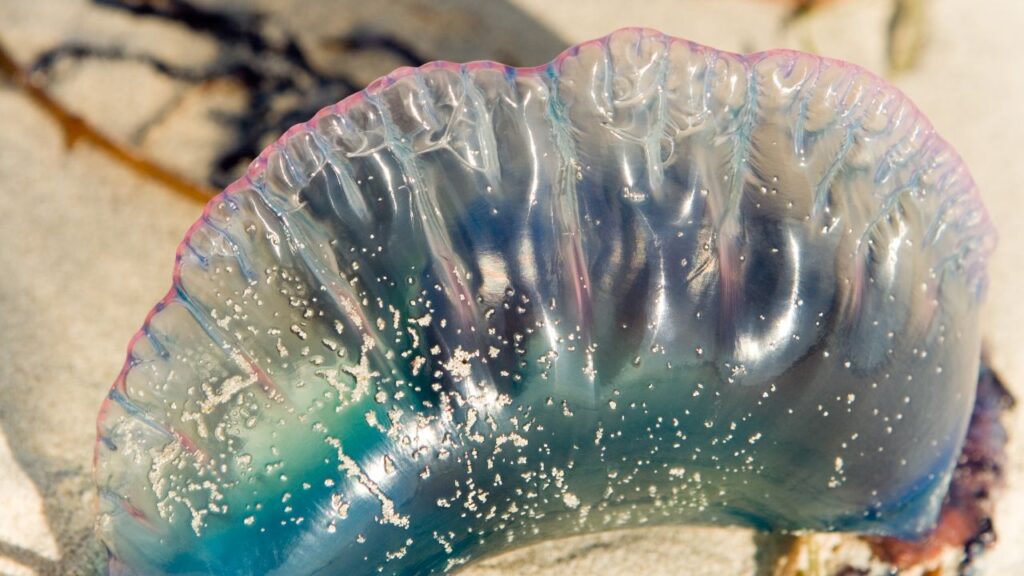
The Portuguese Man of War has an impressive ability to control its tentacles. When not hunting or threatened, it can retract its long tentacles, shortening them significantly. This retraction can happen in a matter of minutes, allowing the creature to quickly adapt to changing conditions. When fully contracted, the tentacles form a tight coil beneath the float, making the Man of War much more compact and less visible in the water.



